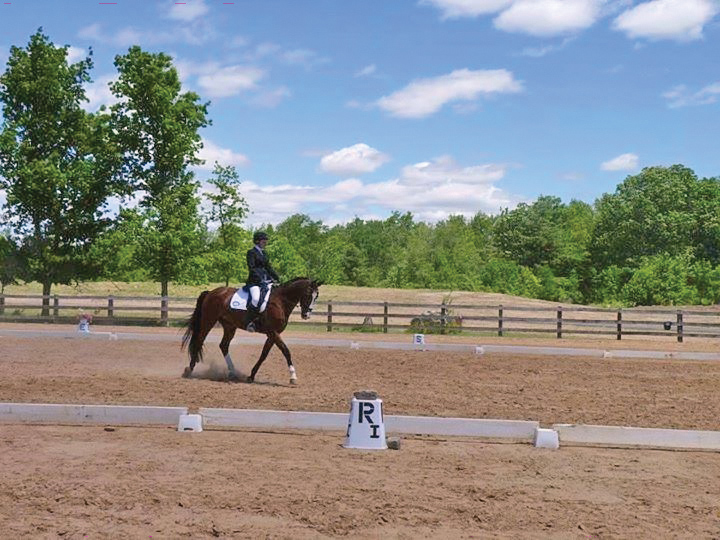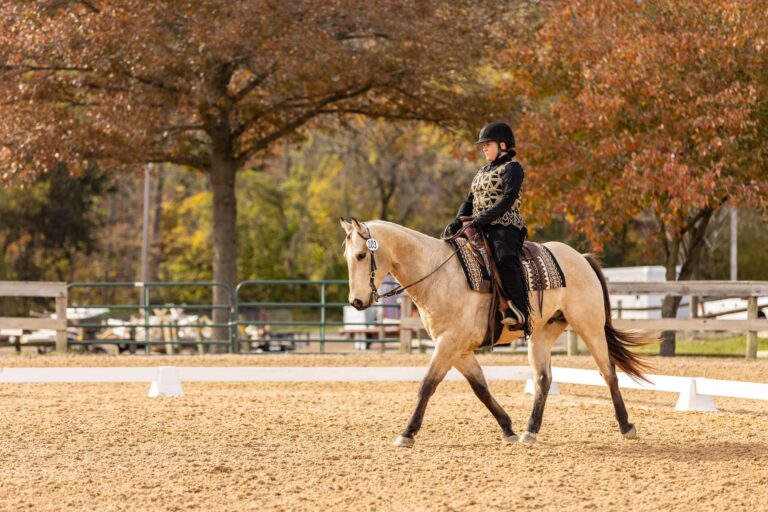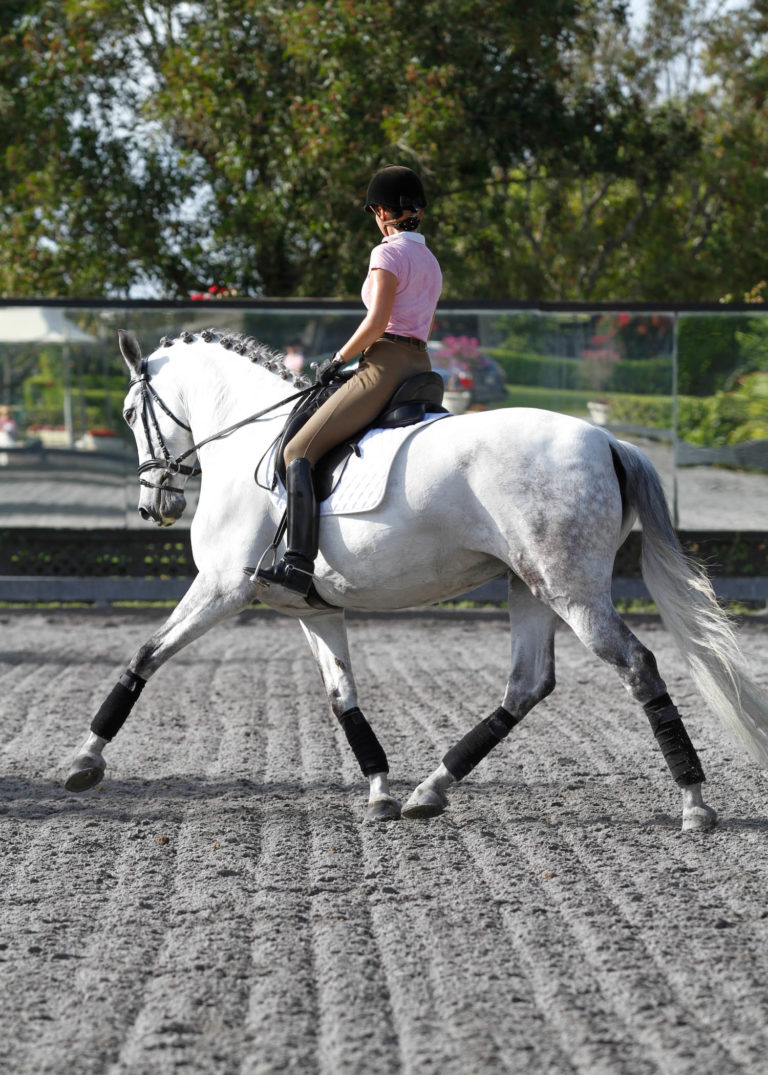Watching a Grand Prix rider perform a powerful trot with long moments of suspension is a treat. Many dressage enthusiasts strive to achieve that level of collection. Similarly, one often dreams of riding big and floating extensions, but in reality the steps of the horse become hurried and the rhythm becomes faster. Getting the horse to perform bigger, longer steps while maintaining the rhythm remains one of the biggest challenges in dressage.
In order to develop more powerful steps, instructors advise their students to stick to an even rhythm, no matter what. Only from an even rhythm will the horse’s body be able to relax and release the full potential of its muscle power at the same time. Good riders know this and tell their students to ride with a mental metronome in their heads, counting each step. The Training Scale backs up this emphasis on keeping the rhythm by listing it as the first quality. So far, so good.
What the Training Scale and most instructors do not reveal, however, is that in order to make this precious concept of rhythm really work, the rider must also lead the rhythm while keeping it. This implies that she must exactly match the moments of impact on the saddle at every trot step with the ones of the horse on the ground. Trotting (like all the other gaits) is nothing but alternately obeying and beating the forces of gravity—the horse’s body and the rider’s body raise and lower with each step. Harmony arises when the landing phase of the rider’s weight in the saddle matches exactly with the landing phase of the horse’s weight. If the impact of the rider’s weight occurs only a fraction of a second later than the horse’s, he will receive a downward push at the very moment when he has begun to rise in his body to take the next step. This makes every trot flat.
Imagine jumping on a trampoline as the principle is the same. When you’re all the way down with the elastic surface stretched at its fullest, the energies will redirect and send you upward again. If just at the very moment when you are about to move upward you receive a downward push from someone’s hand, you will lose energy and your jump will be less expressive or high.
Getting powerful jumps also requires that you set up your body in a certain way, which in common dressage terminology is called a correct seat. The trampoline analogy also explains this well: If you’re sloppy or stiff in your body, you will not be able to perform powerful jumps. In fact, nothing will happen. To be able to jump, you need to have positive body tension—straightness and stability in your body—as only positive body tension allows for the body to move in rhythm. This can be compared with the straight and upright upper body position when sitting the trot, for instance. If the rider is too stiff or too wobbly in her upper body, she cannot move in a springy rhythm using her weight aids.
Positive body tension includes the quality of suppleness. A supple body is a body that uses its weight actively (the energy can pass through) as opposed to passively (stiff or static). So to be able to lead the rhythm, you must ride with your weight active instead of passive. By riding with your weight active, I don’t mean working excessively with your body (i.e., pumping or moving back and forth of your upper body). The quiet, balanced seat is still the foundation for everything, including positive body tension. What I mean by “active” is that the rider must allow her weight to spring down rhythmically through her body with the rhythm of the horse, as opposed to holding her weight which happens through stiffening.
A good method to feel and experience the connection of your weight and the rhythm of the horse is transitioning between the light seat and the dressage seat. It will help you get the feel for riding with your weight active and rhythmically moving with the horse. At the trot, go in the light seat and gradually lower your seat until you’ve reached the position of a dressage seat. Then slowly go into the light seat again. As you do so, feel how you pass on the weight from your stirrups over your knees and thighs to your seat bones, back down to your stirrups. Although the amount of your weight will not change, experience how the location changes. In the light seat, your weight will be lower, deeper and closer to the horse’s rib cage. Concentrate on your horse’s movement. You need to feel each landing step of the horse like a spring through your ankles, knees and hip joints. Next, transition into the dressage seat and feel how your weight moves upward. Again, feel each landing step of the horse like a spring through your ankles, knees and hip joints. Since your weight is a living component, it’s crucial that in both the dressage seat and the light seat, as well as when transitioning between the two, you let the energy pass unhindered through all your joints and not be stiff anywhere when doing this exercise. Your seat must be perfectly supple.
It is not a coincidence that many top dressage riders (such as Hubertus Schmidt, who I believe is currently one of the best riders in the world) had a successful career in show jumping. Good jumper riders know that the last canter stride before the obstacle is the most important one because it determines the quality of the jump.
Forced to use their legs as springs to balance better in shorter stirrups, these riders have broadened their spectrum of body awareness, suppleness and balance.
Knowing how to lead the rhythm not only enables you to ride more powerful steps into your horse and give each gait more impulsion, it also enables you to calm down an excited horse and to encourage a lazy horse. Furthermore, by merely changing the rhythm of your seat, you can ride transitions between gaits with seemingly invisible aids. Rhythm improves the balance of horse and rider. This is also the key out of which extensions become possible without becoming flat or hurried. I believe that students can’t be introduced to riding in rhythm (keeping and leading it) too early. Learn to live through your body, joining perfectly with the rhythm of your horse. If you also stick to the other principles of the Training Scale, one day you’ll be able to simply ride and dance together in rhythm.
This article first appeared in the January 2007 issue of Dressage Today.
Susanne von Dietze is a physiotherapist and riding instructor with her Trainer A qualification. She is also a judge for dressage and jumping. A native of Germany, she gives seminars and lectures at the German Riding Academy in Warendorf and worldwide. She is the author of the books Balance in Movement and Rider and Horse: Back to Back. She lives in Israel with her husband and three children, where she competes at the FEI level.










